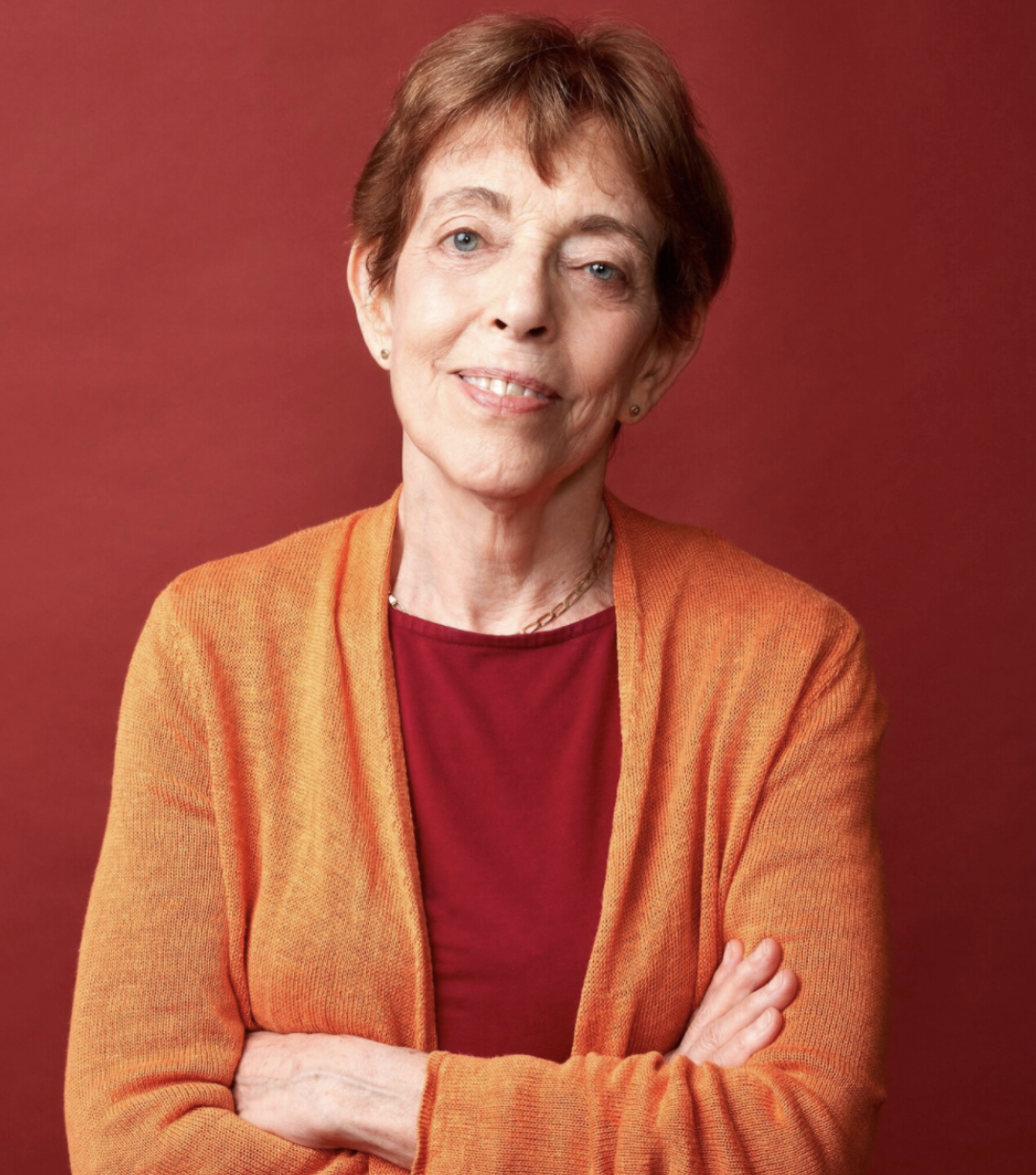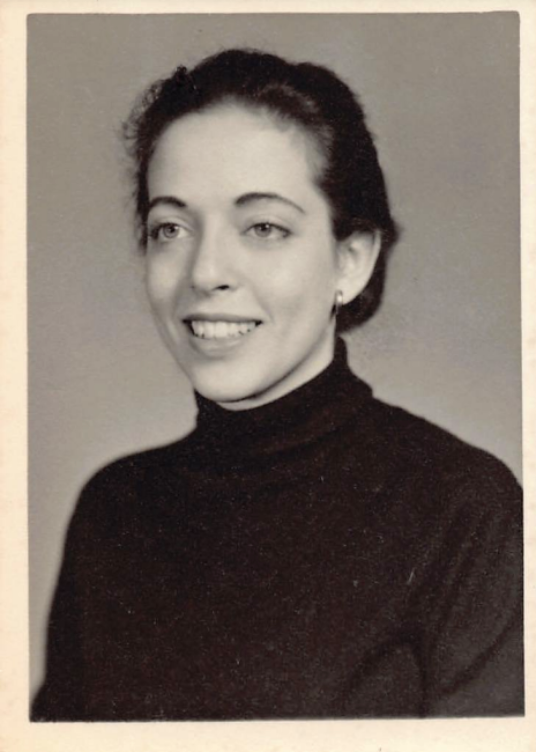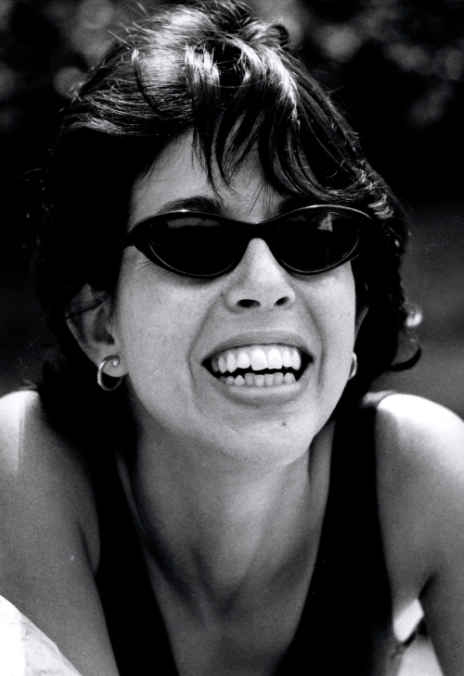Shanna Swan

Shanna Swan (then known as Helen Wittenberg) earned her PhD in Statistics from UC Berkeley in 1963, after earning an MA in Biostatistics from Columbia and a BA in Mathematics from the City College of New York. After proving an extension of the Central Limit Theorem and graduating with her PhD, she stayed at Berkeley working at the seismographic station. Today, Shanna is a renowned epidemiologist and professor of environmental medicine and public health at the Icahn School of Medicine at Mount Sinai in New York City. She has had a successful career working at Kaiser Permanente, the California Department of Health Services, the University of Missouri and the University of Rochester. Her much anticipated book, Count Down, about how chemical exposures are affecting our health, will be available next month. I sat down with Shanna to hear about her amazing career path and time at Berkeley.
Amanda Glazer (AG): How did you first get interested in math when you were younger?
Shanna Swan (SS): This is a weird story. I went to a school for intellectually gifted children. It’s called Hunter Model School in New York City. I wasn’t aware of a particular interest in math. When I was around 10 years old, I was going to the 92nd street Y, and I started acting and I loved it. I became a child actress. I was on TV, radio. I went to the High School of Performing Arts. I was an actress, and math was nowhere in the picture. But I was clearly smart. After two years in the High School of Performing Arts, for various reasons, such as the academics, I decided to switch to Bronx Science. It was a real difference academically. At Bronx Science I got the first C in my life, and I had to start working. When I went to City College I majored in math with a minor in logic. I think it was because I had some very good teachers at Bronx Science that I got really interested in mathematics.
AG: What happened to your acting dream?
SS: It was wonderful for the time. But I’m 5 feet tall, so I played children all the time but pretty soon you can’t play children. I was rejected so many times, making the casting rounds, and I just couldn’t take it. It’s not my personality to be continuously rejected. So I just figured, I can’t do it, I’m not going to make it in this field. And that’s true, it’s very, very hard to make it in acting. I did the right thing, but I still feel very fondly about acting. But I have to say the fact that I did that means that I can talk to 2000 people and not care. I can talk to a TV camera and not care. So, it was very good training for that.
AG: How did you end up at Berkeley for your PhD?
SS: My path has been very unusual in many ways. My interest was originally in foundations of mathematics and logic. I got the Ward Medal in Logic from CCNY. Then the summer after graduating I had no money, so I took a job at Health Insurance Plan of New York as a medical coder. It was very boring but fine. It was a job. The head of the group called me into his office and he said, “What are you doing here? Why aren’t you going to school?” And I said, “Well I don’t have any money.” And he said, “Just apply to the biostat program at Columbia. I’ll write a letter, and you can get a NY Regents Fellowship.” And that’s what happened. I got my Masters in biostat from Columbia. While I was there I studied with somebody named Agnes Berger. She was a friend of Neyman’s.
Then in February of ‘61 I took off and went to Berkeley. I went first to see Tarski because I was interested in foundations of logic, mathematics. But he couldn’t get me any money, so I went to Neyman.
The semester had started. I never applied to the Statistics PhD program. This is how I got into the program: Neyman said, “Go to the board.” So, I went to the board and he said, “Integral 0 pi/2 sin(x) dx.” I wrote that down, and then he said, “Now which is bigger, in the sense of Riemann or Lebesgue?” And I looked at it, and it was so simple. I said, “Well, it’s the same.” He goes, “Good. Now can you make tea?” And that was my entrance exam. Plus the letter from Agnes Berger. I got a key to Campbell Hall, a desk, and a teaching fellowship, and then I was good to go. I was in the program.
Coming from foundations of mathematics, I was not actually interested in statistics. My interest was in probability theory, so I studied with Loève and Le Cam. My thesis was a theorem which was published in Loève’s book. The theorem was an extension of the Central Limit Theorem for randomly stopped sums of independent random variables.
AG: Tell me more about your theorem.
SS: I love the central limit theorem (CLT), which to me is one of the most beautiful theorems in mathematics. So, I was thinking about the CLT and thinking about the sequence n, n+1, n+2,... and then I thought, well in a laboratory that doesn’t happen. You lose some rats, some rats have a litter; the sequence is not actually integer. So then what happens to the CLT because it postulates an integer progression. I went to Le Cam and said, “I’d like to think about this, maybe for my thesis.” And he said, “Okay. Just bring it down. Make it really simple.” And so I did. I started with what happens when that stopping variable converges to an integer valued variable and then looked at more complicated cases. The theorem is, “if the stopping rule is independent of the underlying variable the CLT holds.” I think it’s beautiful.
AG: What are some of your favorite memories from Berkeley?
SS: Oh my god, Amanda, the department was the most wonderful department I have ever seen in my whole life. First of all, we were very few students, maybe two students per faculty. The faculty, just think about who was there, David Blackwell, Henry Scheffe, Hodges, Lehmann, Neyman, Le Cam, Loève. I mean just imagine being with those people all the time! It’s like heaven.
Then there was Neyman. Neyman’s influence cannot be underestimated. He brought all those people there, and then he set up the coffee room. This place, every day at lunch, everyone came there. There was coffee, a fridge and a blackboard. People wrote things on the blackboard. They would leave a problem and say, “Here I’m stuck.” Then somebody else would write in the interim. It was continually interactive, students and faculty. There wasn’t a line between students and faculty, it was like we were all in this together.
I remember sitting next to David Blackwell and asking him about a problem, and he’d just sit back and go, “So, let’s bring it down to the unit interval.” He would make everything simple. It was just the most wonderful, nurturing place. Everyone was supported. Then at 3 o’clock Neyman would walk through the halls, and he’d say, “Come! Come, come, come! There is cake!” So, once a week we had cake. It was a family. It was just absolutely extraordinary.

AG: What did you do after you earned your PhD?
SS: As soon as I finished my PhD I was given an assistant professorship. I got pregnant just at the time that I defended my thesis. I went to Le Cam and said, “I’m pregnant. I’m going to get married.” And he said, “Don’t do that.” He said wait until you retire. There was a couple in the math department that had done that. Because there was a nepotism rule at that time, so one of us would have to go. David Freedman (her husband at the time) was hired earlier, so I left.
I left the department but not the university. I got a job in the seismographic station. They had a grant, and they were looking for a statistician, so they hired me. They were looking at the travel time of p-waves which had always been an interesting question. Until atomic testing they didn’t have a place where they knew the signal came from in time and space. Because you have an earthquake but you don’t know exactly where it is. But with atomic testing you know exactly. So they wanted to use the data from atomic testing to update what’s called the Jeffrey-Bullen’s tables, the tables of p-wave travel times for earthquakes. That was the project, and I actually published several papers which were pretty well received in that topic. I did that maybe 5 years, and it was interesting. With a statistics degree you can have a lot of applications. I always enjoy new problems.
AG: What did you do after that?
SS: I went to Kaiser Permanente as a statistician. They were doing a project on the health effects of oral contraceptives, which is starting to get close to what I’m doing now. That was really interesting, and I did that for quite a few years. First, I was the statistician on a particular study. The project was to see what the health impacts of these contraceptives were on a whole array of women’s health measures -- their lung function, blood pressure, cell counts, etc. As I was doing that, I started to get interested in the science of it. Because that’s the way I am, I can’t just do the numbers. So I started studying the subject matter, and I started to write papers on my own. I gradually morphed into an epidemiologist, because I was publishing on epidemiology. Then I heard that the Health Department was hiring, and they wanted someone who could fill the role of both biostatistician and epidemiologist. And I said, me! So, I was hired, and it was wonderful. I stayed for 17 years in the California Department of Health Services. It was a new program in environmental health and within that, I got to form a reproductive health group.

Strawberry Canyon
AG: At what point did you move back to New York?
SS: That was a pretty long trek. I was in the health department. I was appointed to a National Academy of Sciences committee on a class of chemicals called endocrine-disrupting chemicals (EDCs) that affect the body’s hormones. I went to this committee knowing nothing about these chemicals at all. I went because it sounded like an interesting thing to do. On that committee I was the only statistician or biostatistician. A paper had just come out saying that sperm count had declined 50% in 50 years. So, the committee asked me, “What do you think of this paper? Do you think we should consider it in our deliberations?” I looked at it, and I thought, “I don’t think so.” It looked pretty thin. I had some time, so I said, “I’ll just spend the next 6 months and I’ll address that question.”
I got the underlying data. I looked at all the confounders and risk factors. What could have artificially created this trend? I had two colleagues work with me on that, and when we were all done, it was really quite astounding, that the point estimate for the slope of the decline was identical to the decimal place. It was stunning. Biggest shock of my life. I took it back to the committee and said, “I think there’s something here. I cannot make this go away.” The paper had been attacked worldwide, and I had taken every bias into account, and I couldn’t make it go away. It wasn’t the age, sampling method, or way of recruiting. Nothing changed it. So, I thought, well this is pretty strong. I went back to the health department and I said, “EDCs are serious risk factors.” But they said, “We’re not interested.” So then I moved back into academe with fulfilling positions at the University of Missouri, the University of Rochester, and Mt. Sinai, continuing my research on EDC's.
Actually we’re going to go back to California in May. Because in the 37 years I lived in California I had 3 children, and I have 6 grandchildren and my sister’s there and she has 4 children and so we’re like 25 people, family. And I’m here and they’re not. All in California. I feel like I’m going to go home, because that was my home.
When I went out to Berkeley for the first time, which was the first time I ever flew, I took that bus from the airport to Berkeley. I went to the International House. I figured I could get a room there. I didn’t have a reservation. I knew nobody. This was really crazy. It was just a great time. But when I took that bus into Berkeley, and I saw the palm trees, and I’d come from NY in February, I thought I’d died and gone to heaven. I thought, “Oh my god, I am never leaving this place.”
AG: After working so long in public health and writing a book, how do you think about science communication?
SS: I spent 17 years in the Health Department and that really changed me. That made me a public health scientist. Our job was to respond to the concerns and needs of the California population. That was our primary goal. It was not to do research, but we did do research in the service of that. The first project I took on in the Health Department was in Santa Clara where there had been a spill of toxic chemicals from a semiconductor plant, and the community was concerned about the water. I went there to determine if there was really a problem and whether there was a possibility of a study. And the answer was yes, and I did that study. What was driving my science at that point was concern of the public. That has remained my overarching concern. I don’t believe it makes sense to do science in a vacuum.
I told you how in ‘95 I got on this committee when they asked me to look at sperm decline. Well my book starts with the story of sperm decline where I repeated that study in a much more sophisticated analysis. That study went viral. It was the 27th most cited study in the world in 2017. It was a very big thing. Because of that, someone came to me and said, “Will you write a book about this?” I thought about that a lot, and I thought, well why should I write a book? And what made me write the book was the fact that I had talked for 20+ years to scientific and government committees and written over 200 papers, and people still didn’t know what an endocrine-disrupting chemical is! So, what I had done had not worked. It didn’t cause change or public health to improve. So, I decided to write the book. Now, I’m launching a campaign which we’re calling the Action Campaign, to follow up on the publication of the book and get communities involved. I feel like I need to do something that makes a difference. Public health does that, and I hope what I’m doing now can do that.